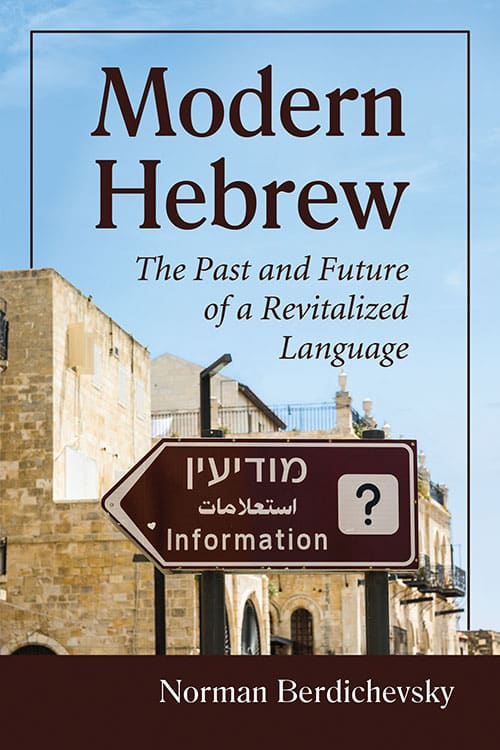Modern Hebrew
The Past and Future of a Revitalized Language
$39.95
In stock
About the Book
Ben-Yehuda’s vision of a modern Hebrew eventually came to animate a large part of the Jewish world, and gave new confidence and pride to Jewish youth during the most difficult period of modern history, infusing Zionism with a dynamic cultural content.
This book examines the many changes that occurred in the transition to Modern Hebrew, acquainting new students of the language with its role as a model for other national revivals, and explaining how it overcame many obstacles to become a spoken vernacular. The author deals primarily with the social and political use of the language and does not cover literature. Also discussed are the dilemmas facing the language arising from the fact that Israelis and Jews in the Diaspora “don’t speak the same language,” while Israeli Arabs and Jews often do.
About the Author(s)
Bibliographic Details
Norman Berdichevsky
Format: softcover (6 x 9)
Pages: 240
Bibliographic Info: 21 photos, notes, bibliography, index
Copyright Date: 2014
pISBN: 978-0-7864-9492-7
eISBN: 978-1-4766-2629-1
Imprint: McFarland
Table of Contents
Acknowledgments vi
Note to the Reader viii
Preface 1
1—Hebrew in American Popular Culture 7
2—The Magnificent Heritage of Hebrew 15
3—Modern Hebrew’s Inspirational Example 30
4—The Three-Thousand-Year-Old Treasury 43
5—How Hebrew Became a Modern Language 49
6—Do the Israelis Speak Hebrew or Israeli? 64
7—The Worldwide Rivalry with Yiddish 75
8—Negation of the Golah (Exile) and Hebraic Identity of a New Nation 87
9—Baltic Rebirth and the Zionist Staging Ground for a Jewish State 107
10—The First Modern Hebrew Textbooks Set in Palestine 117
11—The Soviet Persecution of Hebrew 124
12—Arab-Israeli Use of Hebrew 136
13—From Jewish State Toward a Hebrew Republic? 157
14—Slang and Profanity in Spoken Hebrew 172
15—The Current Assault on Hebrew at Home 178
16—Outlook for Hebrew Education in the
United States and the United Kingdom 184
Epilogue 190
Chapter Notes 201
Bibliography 215
Index 223
Book Reviews & Awards
- “Admirable work on a remarkable language”—Middle East Quarterly.





